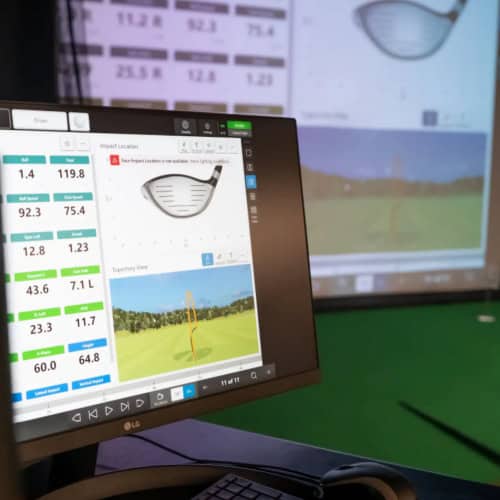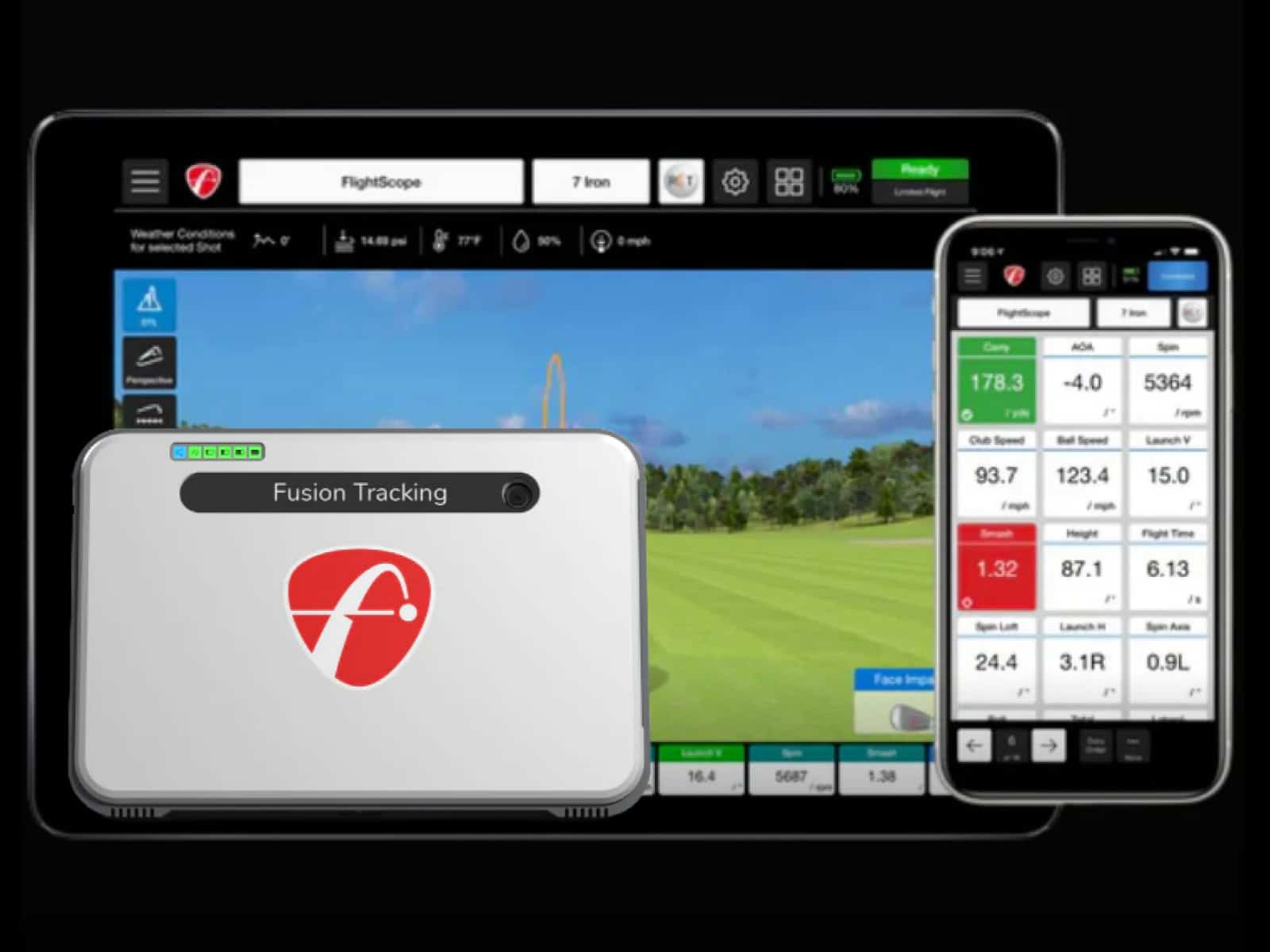When your Mevo Plus isn’t registering slices or draws, it’s often due to issues with spin axis detection. This can be frustrating, especially when you’re working hard on perfecting your shots.
Spin axis plays a crucial role in how your ball curves through the air, and without it being captured correctly, your Mevo Plus may misrepresent shot shapes.
In this guide, we’ll dive into the key factors that cause these issues and walk you through easy, actionable steps to get more accurate readings, whether you’re practicing indoors or hitting balls outdoors.
Why the Mevo Plus Misses Slices and Draws
When your Mevo Plus isn’t showing slices or draws, the issue is usually related to spin axis detection. Understanding how the radar works and why certain factors impact the data can help you resolve this problem.

The Importance of Spin Axis for Curvature
Spin axis, an invisible force that causes the ball to curve in the air. Without accurate spin axis data, the device struggles to display realistic shot shapes, especially on curving shots like hooks or fades.
When the spin axis isn’t captured correctly, your shot will look straighter than it actually is, making it difficult to trust the data and affecting your confidence.
The Role of Ball Flight in Spin Axis Detection
For the radar to accurately capture spin axis, it needs to see a full ball flight. This means that short indoor distances can really throw things off. If your ball only travels a few feet before hitting the screen, the radar doesn’t have enough time or space to calculate spin properly.
Essentially, the radar needs a longer ball flight to work out the true curvature of your shots. Without that, the Mevo Plus may end up estimating the spin axis, which results in errors like overly straight shots, even when you’re intentionally trying to draw or fade.
Common Causes of Spin Axis Problems
The following factors play a significant role in spin detection, whether you’re indoors or out, and addressing them can improve the accuracy of your readings.
Insufficient Ball Flight and Indoor Setup Limitations

Spin axis detection relies heavily on the ball’s flight. The radar needs to track the ball for a sufficient distance to accurately measure the curvature.
Indoors, this is a challenge. With limited space, the ball doesn’t travel far enough for the radar to capture spin properly, often resulting in spin axis data being inaccurate or missed altogether.
To fix this, make sure you have enough room for the ball to travel. Aim for at least 13 feet of ball flight if possible. Even a small increase in flight distance can improve accuracy.
Alignment and Placement Issues
Where you place your Mevo Plus matters more than you might think. Misalignment between the device and the target line can skew the data, leading to false spin axis readings. This is especially noticeable indoors, where tight spaces make alignment harder to achieve.
To get reliable results, the Mevo Plus should be positioned about 7–9 feet behind the ball, directly aligned with the target line. Double-check the unit’s orientation using the FS Golf app to make sure everything is set up properly.
Electronic Interference and Environmental Factors
Your indoor setup might be fighting against you. Fluorescent lights, TVs or even other electronic devices can interfere with the radar’s ability to accurately detect spin axis. These disruptions can lead to distorted readings or a complete failure to capture spin data.
The solution is simple: clear any unnecessary electronics away from your setup. Reducing environmental interference helps the radar track the ball more effectively, ensuring more accurate readings of spin axis.
How to Fix Spin Axis Problems with Mevo Plus
By making a few simple adjustments to your setup and equipment, you can improve spin axis detection and get more accurate readings.
Use of Metallic Dots or RCT Balls
One of the easiest fixes is using metallic dots or Titleist RCT balls. These provide a reflective surface that helps the radar capture the ball’s spin more accurately.
Regular golf balls don’t have the necessary surface for precise spin readings, especially indoors where radar signals can struggle to detect spin. By adding metallic dots or switching to RCT balls, you give the radar what it needs to track spin and axis more reliably.
Optimizing Radar Setup for Accurate Readings
Placement of the Mevo Plus is crucial. Position it about 7-9 feet behind the ball, aligned with the target line. If it’s too far or too close, it can skew the results. Additionally, make sure the radar is level, as a slight tilt can lead to inaccurate readings, especially when measuring spin axis.
Pay attention to your indoor distances as well. The more room you can give the ball to travel, the better. Aiming for 13 feet of ball flight can significantly improve the radar’s ability to track spin accurately.
Calibration for Indoor and Outdoor Conditions
Whether you’re indoors or outdoors, ensuring proper calibration is key.
Indoors, you may need to adjust the device’s settings to match your environment. For example, if you’re in a smaller space, use the “Short Indoor” setting.
Outdoors, make sure the radar is calibrated for open space with enough flight distance for accurate spin data.
The Pro Package: Enhancing Club Data for Accurate Diagnostics
Upgrading to the Pro Package can give you a deeper understanding of your shots, improving your ability to fix spin axis issues. While the base Mevo Plus offers great data, the Pro Package adds extra metrics that help you fine-tune your setup and shot shape accuracy.

How Club Path and Face Angle Impact Spin Axis
To truly understand why your shots aren’t curving the way you want them to, club data like face angle and path are essential. The face angle at impact affects the spin axis significantly, and the club path influences the curvature of the shot. Without this data, it’s hard to pinpoint what’s causing the ball to fly straight or miss its intended curve.
The Pro Package tracks these variables and gives you real-time feedback, helping you adjust your swing or club position to create the desired shot shape.
Benefits of Upgrading to the Pro Package
The Pro Package provides much more than just spin axis data. With additional metrics like club path, attack angle and face-to-path measurements, you can get a much clearer picture of what’s going on with your shots. These extra data points allow you to see how your club’s movement is affecting the ball’s spin and trajectory.
By understanding these factors, you can make better adjustments to your swing and improve both your accuracy and shot consistency.
If you are comparing the cost of adding the Pro Package or considering other FlightScope models, the FlightScope Price Guide breaks down pricing for Mevo, Mevo Gen2, Mevo Plus and the X3/X3C, including upgrade costs and optional add-ons.
Troubleshooting Spin Axis Issues with Simple Tests
When your Mevo Plus isn’t showing the spin axis correctly, testing with a few simple methods can quickly help you find the issue. These tests focus on determining whether the radar is missing important data or if your setup is off.
Ball and Sticker Test
An easy way to check spin axis accuracy is by comparing results using regular balls versus RCT balls or metallic dots.

Start by hitting several shots with your standard golf balls. Then, swap to RCT balls or balls with metallic dots. Compare the spin axis readings between the two. If the readings with RCT balls are more consistent and accurate, the issue likely lies with how the radar is detecting spin on regular balls.
Flight Window Adjustment Test
Next, check if your setup is affecting spin axis detection. Adjust the flight window distance: move the ball back or forward and note how this affects spin axis readings. A small change in the ball’s flight path can often improve radar accuracy.
If extending the flight window (making the ball travel a longer distance) gives you better results, your setup may be limiting the radar’s ability to capture the spin properly.
Pro Package Data Cross-Check
If you’ve upgraded to the Pro Package, use the additional club data to cross-check the spin axis. The Pro Package tracks data like club path, face angle and attack angle, which can help you understand why your spin axis readings might be off.
For example, if the face angle shows an open clubface but the radar still shows a straight shot, this suggests the spin axis isn’t being calculated correctly. Use these extra data points to diagnose and adjust your swing or setup, ensuring more accurate results from your Mevo Plus.
Advanced Tips for Accurate Spin Axis Registration
If you’ve tried the basic fixes and your Mevo Plus still isn’t registering spin axis properly, these advanced tips can help refine the setup and performance. Sometimes, the issue isn’t just the equipment, and small adjustments can make a big difference in tracking accuracy.

Reducing Interference from Electronic Devices
Electronics can mess with radar signals, especially in indoor setups, making it harder for your Mevo Plus to get accurate spin axis data. The radar struggles when it can’t properly read the ball’s movement.
To clear up the interference, move any unnecessary electronics away from the radar. It’s best to keep the area around your setup as clear as possible to ensure clean radar returns. The fewer distractions, the better the radar’s ability to detect spin and track the ball’s flight path.
Firmware and Software Updates
Outdated software or firmware can lead to spin axis misreads. The Mevo Plus occasionally gets updates that improve its functionality, including spin axis detection. Ensure your device’s firmware is up to date, and don’t forget about the app. New versions often fix bugs and enhance the radar’s tracking ability.
Checking for software updates can be a quick way to resolve persistent issues. If your device is running the latest version and you’re still facing problems, it’s time to check other factors like your setup or environment.
If you rely on E6 Connect for simulated play or practice, understanding how to use E6 Connect with FlightScope devices can also improve tracking consistency and reduce software-related errors during sessions.
Calibration with Alignment Rods
The right calibration is crucial. Sometimes, the radar just needs a little help in aligning with the target line. Use alignment rods to ensure the Mevo Plus is set up perfectly.
Place one rod on the ground to mimic the target line, and adjust the radar so it matches. A simple drill like the “trident drill” can also help you calibrate the radar more accurately. This method uses three alignment rods to ensure everything is lined up correctly.
Frequently Asked Questions
In this section, we address some of the most common questions you might have regarding the Mevo Plus, its spin axis detection and how to optimize its performance.
Why does Mevo Plus register a right spin axis when I intentionally hook the ball indoors?
This issue typically arises due to misalignment or the radar’s inability to track the ball in short indoor spaces. When you’re indoors, the ball’s flight path is limited, making it harder for the Mevo Plus to detect the spin accurately.
To fix this, ensure the Mevo Plus is aligned correctly with the target line and that you are using reflective balls like RCT balls, which can enhance radar detection in tight spaces.
Can using a regular ball instead of an RCT ball affect spin axis accuracy?
Yes, regular balls lack the reflective surface needed for the radar to track spin accurately. RCT balls are designed with this feature and improve the radar’s ability to capture the ball’s spin, providing more reliable readings for spin axis.
How can I make sure my Mevo Plus is properly aligned?
To ensure proper alignment, use the FS Golf app’s camera alignment feature. This will allow you to center the Mevo Plus with the ball and target line. It’s important that the device is level and placed directly in line with your target, as even slight misalignments can lead to skewed data, especially for spin axis.
Is there a specific distance Mevo Plus needs for accurate spin axis detection indoors?
Yes, positioning the Mevo Plus at a distance of 7–9 feet from the ball and ensuring the ball has a flight path of around 13 feet is optimal for accurate spin axis readings.
Shorter flight paths can lead to incomplete or estimated data, especially when using the device indoors where flight space is limited.
Does Mevo Plus measure spin axis directly or calculate it?
The Mevo Plus calculates spin axis based on club data and the ball’s trajectory rather than directly measuring the axis. This calculation can sometimes lead to inaccuracies, particularly when there’s off-center contact or limited flight space.
What role does the Pro Package play in fixing spin axis problems?
The Pro Package provides detailed club data such as face angle, club path and attack angle. These additional metrics help you understand why your shots aren’t curving as expected and can pinpoint where spin axis issues might be originating from.
How can I reduce the chances of spin axis inaccuracies caused by electronic interference?
To minimize radar interference, move electronic devices such as fluorescent lights, TVs and computers away from the Mevo Plus. These items can disrupt the radar’s signals, especially indoors where the Mevo Plus relies on clean readings for accurate spin axis calculation.
Final Thoughts
Spin axis problems on your Mevo Plus often boil down to a few key factors—incorrect ball flight, poor setup or environmental interference. By addressing these issues, you can dramatically improve the accuracy of spin axis detection.
Small tweaks, like using metallic dots or RCT balls, can make a huge difference in how the radar reads spin. Aligning your Mevo Plus correctly and positioning it in the right spot for both indoor and outdoor conditions is crucial. Upgrading to the Pro Package will give you extra data points that help diagnose the root cause of spin axis inaccuracies.
With the right adjustments and setup, you’ll see a noticeable improvement in your Mevo Plus performance.
If you still have questions or comments, please contact us.






